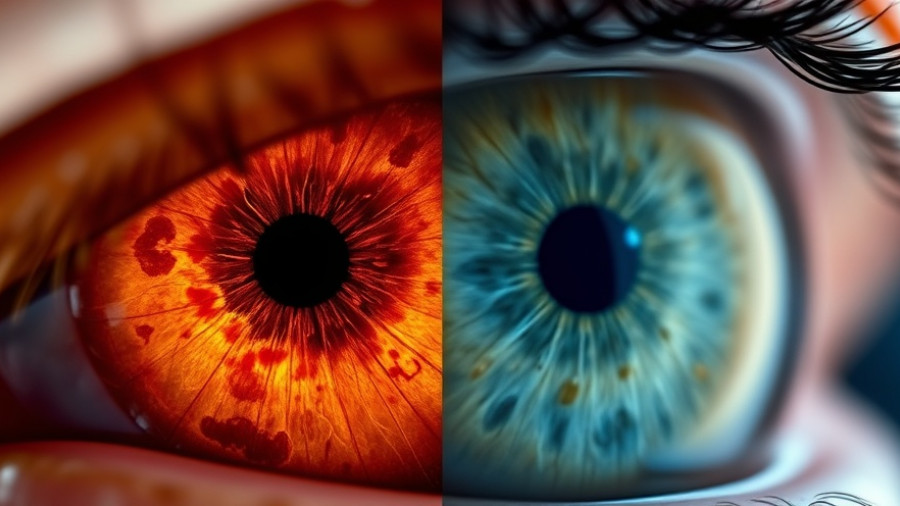
Revolutionizing Vision: The Groundbreaking PRIMA Implant
A groundbreaking retinal implant called PRIMA has emerged as a beacon of hope for those suffering from dry age-related macular degeneration (AMD), particularly those with geographic atrophy (GA). This innovative device, delivering a blend of artificial intelligence (AI) technology and augmented-reality (AR) capabilities, is enabling blind patients to regain the ability to read—a feat previously deemed impossible for many facing complete vision loss.
The Clinical Triumph: A New Hope for the Visually Impaired
In a clinical trial led by researchers from University College London (UCL) and Moorfields Eye Hospital, 84% of participants regained the ability to recognize letters, numbers, and words, dramatically improving their quality of life. Before participating in this trial, many participants were left with only peripheral vision, living in a world devoid of central sight. This clinical advancement not only restores sight but also restores independence and self-confidence among patients.
Among the participants was Sheila Irvine, who, before receiving the implant, described her vision as two black discs with distortion around the edges. After the surgery, she was able to read letters for the first time in years. “Reading takes you into another world. I’m definitely more optimistic now,” she said, highlighting the emotional and psychological benefits that come hand-in-hand with this medical breakthrough.
Understanding the Technology Behind PRIMA
The PRIMA implant is an ultrathin microchip inserted into the eye beneath the retina, measuring merely 2mm by 2mm. Working alongside AR glasses equipped with a camera, the implant aids in converting light into electrical signals, which are then transmitted to the brain. In this intricate process, AI algorithms gauge visual scenes captured by the glasses and convert them into a format that allows the brain to interpret them as images.
This novel approach to artificial vision enables patients to perceive their surroundings and engage with the world in ways most have not been able to do for years. The operation, which can be performed in under two hours by trained vitreoretinal surgeons, signifies a crucial stepping stone in making this technology widely accessible.
A Global Perspective: Potential Impact on Millions
Globally, around 5 million individuals are affected by geographic atrophy due to AMD, a condition currently lacking any effective treatment. The PRIMA implant presents a valuable alternative, offering not just a glimmer of hope but also practical rehabilitation solutions for those previously resigned to a life without central vision.
Dr. Peter Bloomfield, director of research at the Macular Society, emphasized the significance of this technology. “These encouraging results indicate an improved quality of life for patients living with dry AMD, particularly GA. With no current treatment options available, this innovation is fantastic news,” he stated, making clear the widespread implications this technology could have for patient care.
Looking Ahead: What This Means for Health and Technology
This impressive leap in artificial vision provides a promising template for future advancements in the fields of biotechnology and AI. As the interface between technology and biology becomes increasingly refined, the potential for similar innovations to transform other areas of medicine becomes clearer. By embracing tech advancements, the medical field may pave the way for solutions to previously insurmountable challenges.
The future of prosthetic vision is bright, with exciting possibilities looming on the horizon. As researchers continue to develop and improve these technologies, the promise of restoring sight and improving lives will eventually become a reality for countless individuals.
Relevance to Today's Dallas Lifestyle
For residents of Dallas and neighboring areas, technological advancements like the PRIMA implant resonate with a community that values innovation, healthcare improvements, and quality of life enhancements. As lifestyle management clinics and healthcare facilities increase their focus on empowering patients with cutting-edge technologies, awareness and education regarding these breakthroughs can inspire hope and action. Local influencers and community advocates can play pivotal roles in promoting awareness around such advancements, contributing to a more informed and healthier public.
Conclusion: Embracing Change and Progress
The PRIMA retinal implant signifies not only a medical revolution but a renewed sense of agency for individuals with vision loss. As the Dallas community reflects on the implications of such technologies, it becomes vital to support continued innovation in healthcare while embracing lifestyle management solutions that offer new horizons and opportunities for living well.
 Add Element
Add Element  Add Row
Add Row 



Write A Comment